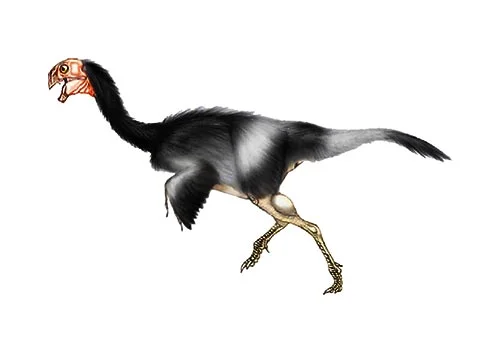Khaan (Lord)

Karn
J. M. Clark, M. A. Norell & R. Barsbold - 2001
Omnivore
Estimated 1.8 meters long
Small Theropod
K. mckennai (type)
Mongolia - Djadokhta Formation
Late Cretaceous, 80 million years ago
Khaan Facts
Khaan is a genus of small theropod dinosaur that lived during the Late Cretaceous period, around 80 million years ago. Its name means “lord” in reference to its presumed status as a predator at the top of the food chain.
Khaan was a member of the oviraptorosaur group of dinosaurs, which were characterized by their beaked skulls and bird-like features. It measured around 1.8 meters (6 feet) in length and likely weighed around 20-30 kilograms (44-66 pounds).
Despite its relatively small size, Khaan was likely a fast and agile predator. It had long, powerful hindlimbs and a long tail, which would have given it balance and stability while running. Its jaws were lined with sharp teeth, and it likely preyed on small animals like lizards, mammals, and possibly even other small dinosaurs.
The fossils of Khaan were first discovered in Mongolia in the late 1990s, and they represent some of the best-preserved oviraptorosaur fossils ever found. In addition to its impressive skeletal remains, paleontologists have also found evidence of feathers and other soft tissues associated with Khaan, which have provided important insights into the evolution and appearance of these fascinating dinosaurs.
Overall, Khaan is an important example of the diversity of theropod dinosaurs that existed during the Late Cretaceous period. Its relatively small size and bird-like features make it a fascinating subject of scientific study and public interest.



